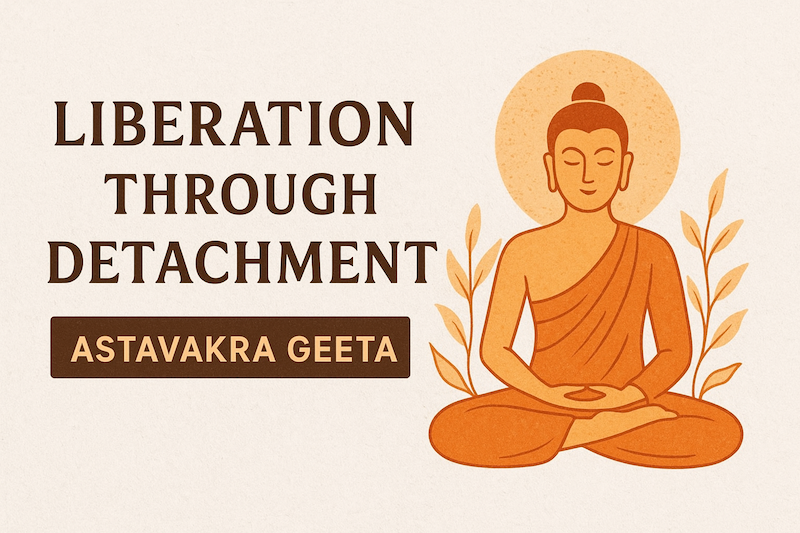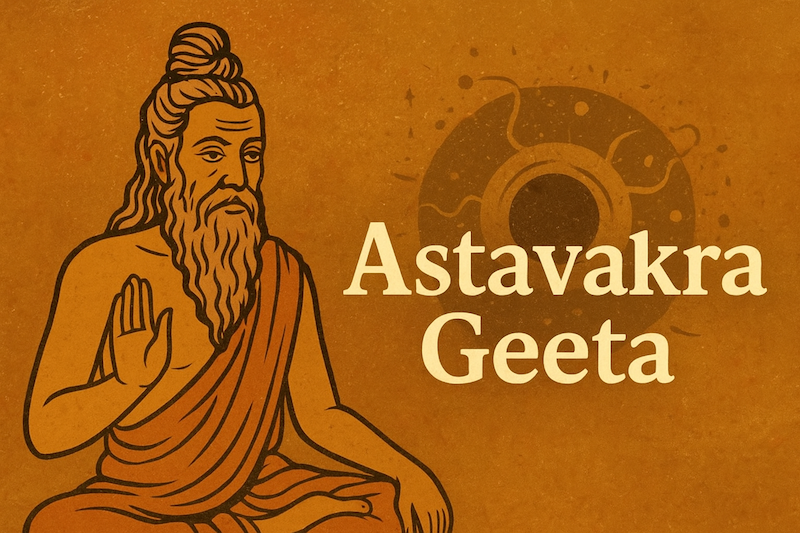The Astavakra Geeta, one of the profound treasures of Indian philosophy, provides timeless wisdom on the nature of liberation. Unlike traditional scriptures filled with rituals and duties, this text emphasizes simplicity, clarity, and direct realization of truth. One of its core teachings revolves around detachment as the gateway to freedom.
What is Detachment According to Astavakra Geeta?
In the modern sense, detachment is often misunderstood as indifference or coldness. However, the Astavakra Geeta defines detachment as the ability to see the world as it is, without being enslaved by desires, fears, or attachments.
For instance, a person can enjoy relationships, work, and material possessions, but the moment these become sources of identity or bondage, suffering begins. True detachment is not rejection of the world but living in it with awareness and freedom.
The Bondage of Attachment
Astavakra points out that the root of bondage is attachment to the body, mind, and external objects. People cling to achievements, possessions, opinions, and relationships, believing them to be permanent. When these change or disappear, pain follows.
This ancient wisdom reflects today’s reality: materialism, competition, and comparison often create anxiety and restlessness. Astavakra reminds us that freedom comes when we let go of these false anchors.
The Joy of Inner Freedom
The text beautifully states that liberation does not require going to forests, performing rituals, or renouncing family life. Instead, it requires a shift in perspective:
- See the self as pure consciousness, beyond body and mind.
- Accept that the world is ever-changing.
- Realize that nothing external can add or subtract from your true nature.
Such realization brings a sense of inner joy and unshakable peace. One no longer swings between happiness and sorrow based on external events but lives in the bliss of self-awareness.
Practical Application in Daily Life
Astavakra’s wisdom may seem abstract, but it is deeply practical:
- Mindful Awareness – Observe your emotions when desires arise. Ask yourself, “Is this need defining me?”
- Practice Letting Go – When something doesn’t go your way, pause and remind yourself of impermanence.
- Balanced Living – Enjoy success, relationships, and possessions, but don’t allow them to control your peace of mind.
The Essence of Liberation
In essence, Astavakra Geeta declares that liberation is not something to be attained but recognized. The self is already free, infinite, and blissful. What binds us is only the illusion of attachment. Once this illusion dissolves, life flows naturally in peace and harmony.
✨ The Astavakra Geeta continues to inspire seekers across centuries by showing that liberation is not in rituals, but in realizing who we truly are — beyond attachment, beyond fear, beyond limitation.


